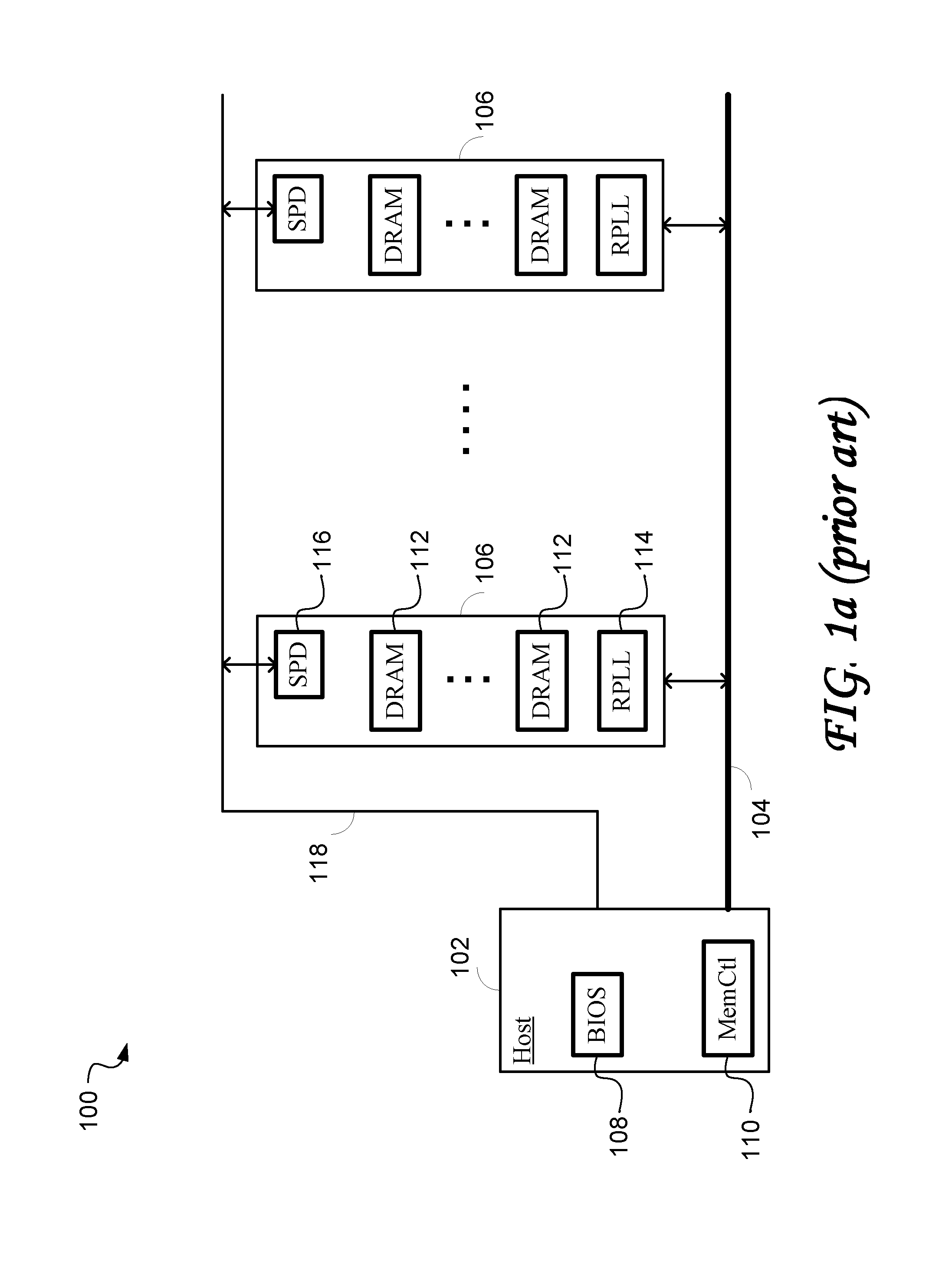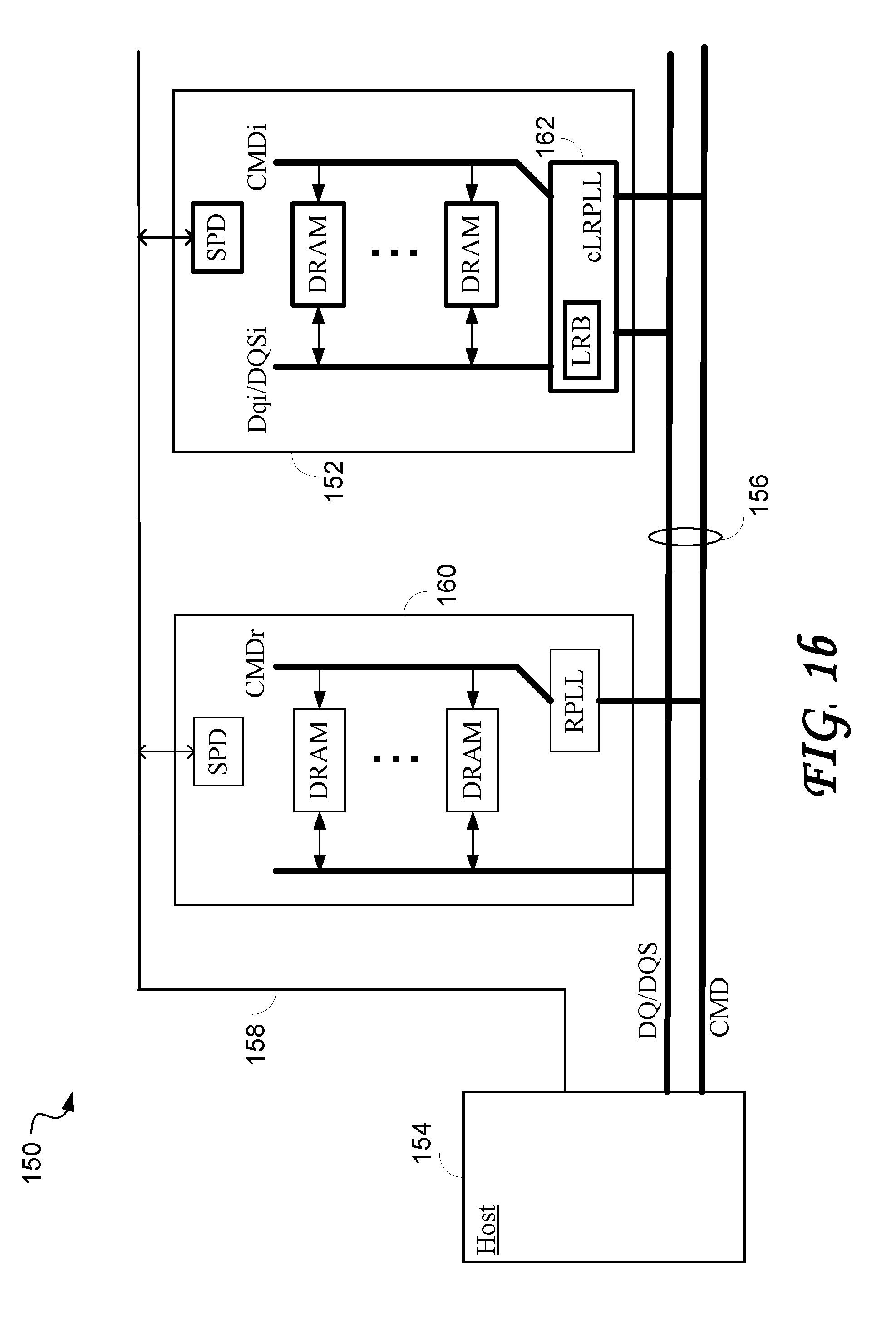Load reduction dual in-line memory module (lrdimm) and method for programming the same
a memory module and dual-in-line technology, applied in the field of computers, can solve the problems of limiting the use of newer memory devices in existing computers, affecting the performance of the system, and no solution is known which would allow an lrdimm, so as to optimize the power consumption and minimize the number of dead cycles
- Summary
- Abstract
- Description
- Claims
- Application Information
AI Technical Summary
Benefits of technology
Problems solved by technology
Method used
Image
Examples
Embodiment Construction
[0076]A solution to the shortcomings of the prior art is described in the embodiments of the present invention, which aims to enable an LRDIMM work efficiently on memory busses with different clock rates, and to allow LRDIMMs to be mixed with RDIMMs on the same memory bus, even without changes to the BIOS or the memory controller.
[0077]FIG. 1b shows an exemplary computer memory system 150 according to an embodiment of the invention, including at least one load reduction DIMM (LRDIMM) 152, as well as a conventional host 154, a conventional memory bus 156, a conventional system management bus (SMbus) 158, and zero or more conventional RDIMMs 160, the conventional components being equivalent to the corresponding host 102, memory bus 104, SMbus 118, and memory modules 106 of FIG. 1a.
[0078]The memory bus 156 comprises a host-side command bus CMD and a host-side data bus DQ / DQS. In the conventional memory module, the host-side data bus extends directly to the memory devices (DRAMs), whil...
PUM
 Login to View More
Login to View More Abstract
Description
Claims
Application Information
 Login to View More
Login to View More - R&D
- Intellectual Property
- Life Sciences
- Materials
- Tech Scout
- Unparalleled Data Quality
- Higher Quality Content
- 60% Fewer Hallucinations
Browse by: Latest US Patents, China's latest patents, Technical Efficacy Thesaurus, Application Domain, Technology Topic, Popular Technical Reports.
© 2025 PatSnap. All rights reserved.Legal|Privacy policy|Modern Slavery Act Transparency Statement|Sitemap|About US| Contact US: help@patsnap.com



